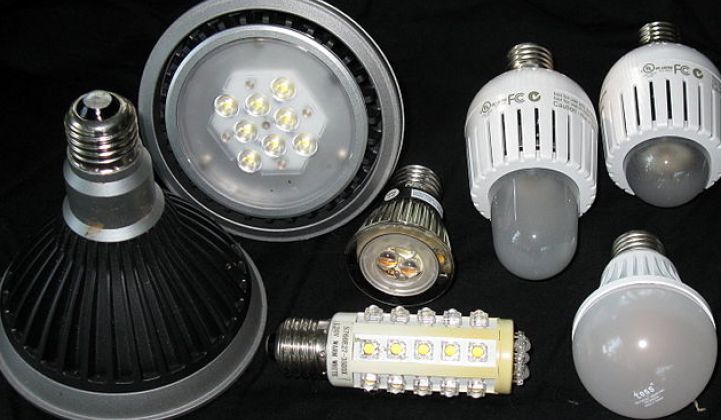Last week was the 13th annual Strategies in Light show, held at the Santa Clara convention center in Silicon Valley with a projected record of 176 presenters/sponsors and 5,000 attendees.
The show’s growth from 12 open tables and 300 attendees in 2000 has mirrored the growth of the industry it represents. Four years ago, 35 booths were struggling to fill one-third of one hall. This year, the show filled the entire center -- and the entire parking lot. However, perhaps mirroring a larger reality, the growth in attendance seems to be slowing relative to the growth in exhibitors.
What were the takeaways from the show?
Simply put, it is the worst of times and the best of times for solid-state lighting (SSL): the market prognosis has never been worse and LEDs have never been better.
Eminence grise Roland Haitz, originator of Haitz’s law (the Moore’s law of LED), told Greentech Media, “It’s going to be bloody awful the next year or two, with all the overcapacity they’re building. Reminds me of DRAM.”
Speakers in the new and heavily attended manufacturing track series presented on how to manufacture in a tight environment. Many referred to the Department of Energy goal of a 20X reduction in LED production cost (yes, 20X -- that’s not a typo).
Outside the convention walls, analysts have been trashing industry standout Cree and predicting flat to declining sales of MOCVD reactors into LED manufacturing. Yet in every aisle, booth exhibitors were cheerful, at least outwardly confident that they could out-innovate or out-cost-reduce the macro scenario -- or simply believing in the proposition of SSL.
Soraa came out of stealth with a bang several days before the show, revealing a gallium nitride substrate-based LED (GaN-on-GaN), with major cost reduction claims. CEO Eric Kim was a keynote speaker.
Consider the example of American Bright, a smaller company that has done imaginative work in panel-level direct die attach, multi-LED selective phosphor overcoating and active IC control of direct AC operated LEDs (compared, for example, to the passive resistor AC control used by players such as Acriche). In previous years, the company seemed to be exhibiting to raise funds as much as to attend to other priorities. This year, President George Lee told Greentech Media, “That phase is past. Now we’re focusing on users of our latest Golden Eye product.”
Some other themes:
- Profusion: Last year there were perhaps four Edison lamp replacements at the 60-watt level. Now, the entrants are too numerous to review here. A whole wave of device makers has gone into designing fixtures.
- Filling in the gaps: During the last year, high-efficiency players like Cree have fielded integrated devices. Integrated-device players like Acriche or Bridgelux improved their efficiency. Other wish-list items have materialized, such as the National Semiconductor (now Texas Instruments) LM3466 active string equalizer chip and a competitor from Fairchild.
- The majors that were there, and those that weren’t: Cree, Osram Opto, Phillips Lumileds, and Seoul Semiconductor (Acriche) had a big presence. Nichia (often secretive) and Toyoda Gosei didn’t come. GE came, but with a pantry-sized booth staffed by a minor acquisition. Are they really on board with solid-state lighting yet?
- Stimulation of other mature industries: Machinists, heat transfer shops, PR firms, semiconductor makers, and even software firms are jumping into SSL. A major heatsink representative told Greentech Media, “A year ago, I didn’t even know what a lumen was.” Mentor Graphics was showing off its thermal modeling software. A zener diode maker is getting its diodes embedded in power LED cases for ESD protection. A company representative quoted a units market in the billions. This trend is not new, but has swelled greatly. How much is genuine renaissance and how much is jumping on an overcrowded bandwagon?
Despite the mixed emotions at the event, LED technology continues to improve, pricing continues to drop, and the inevitability of LEDs vanquishing incandescents and halogens in general illumination remains.



